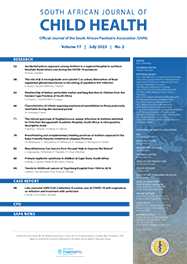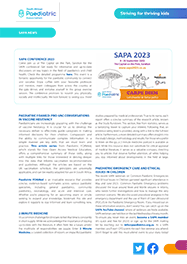Articles

HIV-related oral candidiasis in Nigeria Children: a marker of HIV disease progression
Abstract
Objectives: To evaluation usefulness of oral candidiasis as marker of disease progression in HIV-infected Nigerian children.
Method: Newly diagnosed HIV-infected children, anti-retroviral naïve with oral lesions attending the paediatric infectious diseases unit of the University of Maiduguri Teaching Hospital (UMTH), Maiduguri, Nigeria from July 2006 to June 2007 were enrolled. Clinical oral candidiasis was registered if pseudomembranous oral lesion was observed by the attending physicians. Dynal beads technique (Dynal Biotech, Oslo, Norway) for CD4 counting was used.
Results: The study population comprised 78 HIV-infected children aged 4 to 90 months; (mean: 20.54 ±7.23 months) with a male to female ratio of 1.05:1. The predominant mode of transmission was mother-to-child transmission (MTCT) in 74 (95%) patients, through blood/blood products transfusion in 2 (2.5%) and unknown in 2 (2.5%). The prevalence of oral candidiasis was 20.5% (16) among the study population. The relationship between oral candidiasis and CD4 count for different age groups. The median CD4+ count of children with HIV-associated oral candidiasis is within the severe immunosuppression level for age group. While all children with HIV infection without oral candidiasis had median CD4+ above severe immunosuppression level for age group.
Conclusion: This study has provided additional information with regard to the use of HIV-associated oral candidiasis as a surrogate to CD4 count in initiating antiretroviral therapy in Nigerian children. It is hoped the result will help in scaling-up antiretroviral treatment to over 660,000 HIV-infected children who presently need care.
Author's affiliations
garba mohammed ashir, UNIVERSITY OF MAIDUGURI
Full Text
Keywords
Cite this article
Article History
Date published: 2009-02-02
Article Views
Full text views: 2239

.jpg)



Comments on this article
*Read our policy for posting comments here